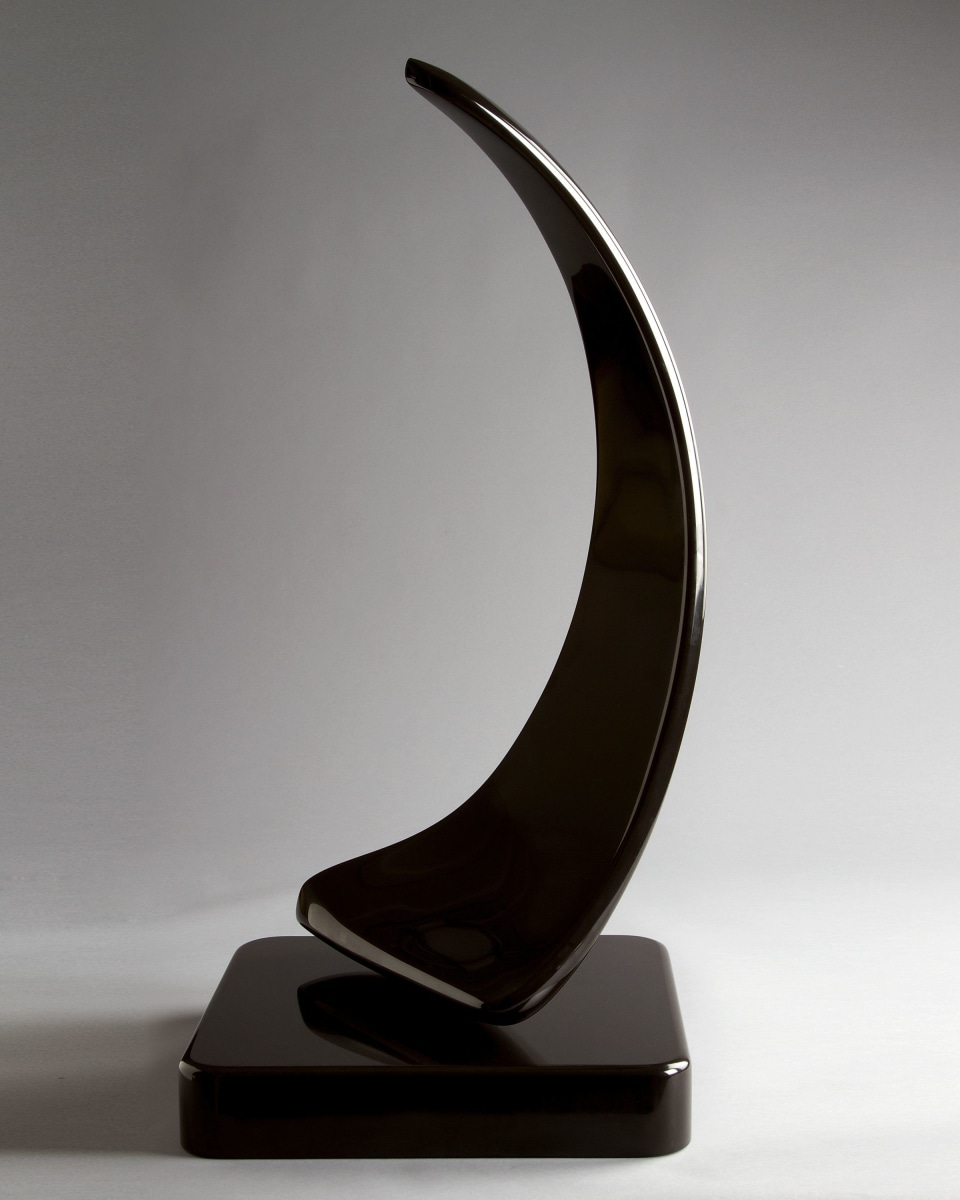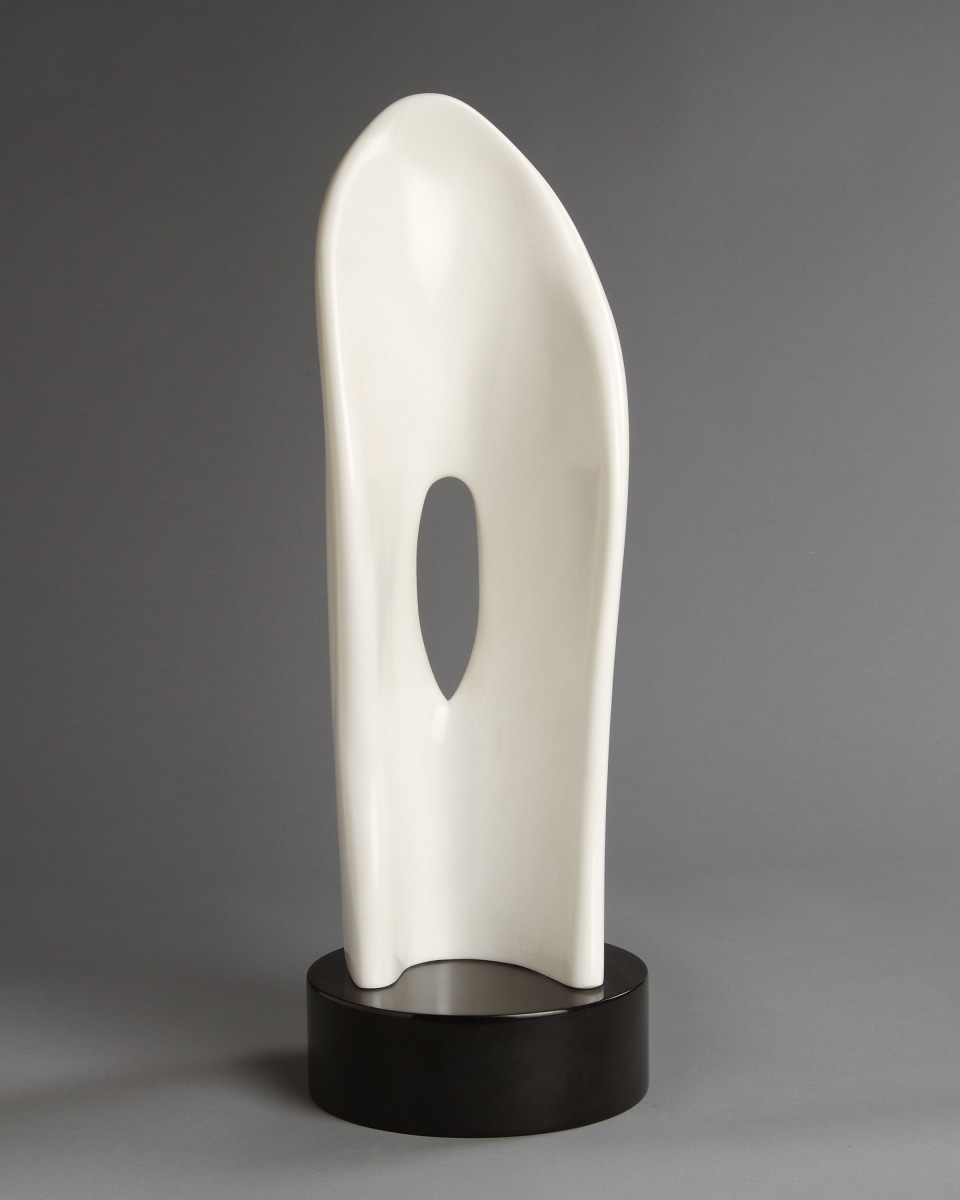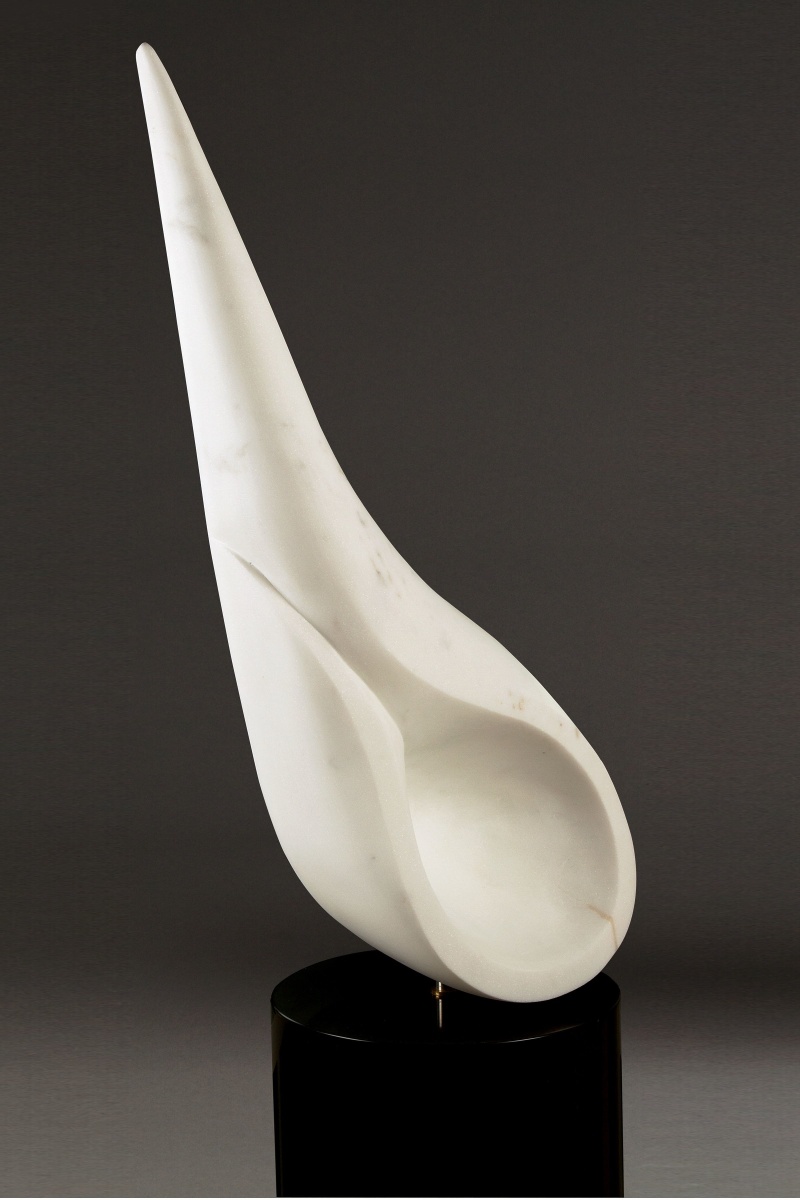Jewish Way Magazine
Charlie Kaplan's lifelong passion yields a gallery of marble sculpture
December 17, 2012

Black Slice, 2005, Belgian Black Marble, 28" x 13"
By Saverio Mancina
Photography by D.A. Brown Photography
Charlie Kaplan's path to sculpting marble began with an interest in hand tools. A natural ability in shop class in high school, a passion for collecting vintage tools, a reader of the history of technology, and a knack for being a handyman around the house meant that as a 24 year old, recently married college graduate living in an apartment in West Hollywood in 1968, he would have a set of new chisels.
After eying an abandoned piece of Douglas Fir in a parking lot, Kaplan hoisted it up to his apartment balcony, reached for his set of new chisels and instinctively started carving. He enjoyed the experience and thus began a decade of trying different types of wood and other materials before arriving at marble, a generation before his first gallery exhibit in 2013.
Opening on January 19 and continuing until March 9, PYO Gallery LA will present "Sculpture, Pleasing Curves", a solo exhibition of marble sculptures by Charlie Kaplan.
Drawn from a collection of works Kaplan created in a 24-year period, the exhibition concentrates on sculptures that fuse Kaplan's signature biomorphic forms with a soulful modernist style. The majority of the works in the exhibition are sculpted from Carrara marble with additional pieces from alabaster, Belgian black marble, Rosso Laguna marble and Bianco Puro Carrara marble.
Inspired by the minimalist curves of Constantin Brancusi and the monumental forms of Henry Moore, Kaplan honors their influence through the elegant forms that trace the path of his intuitive hand; to the bond he has with the elemental forces of creation.
Kaplan employs a method of free association, where the materials actually inform the outcome of his works. Often, layers of marble are stripped away to uncover the artworks that lay trapped within his psyche. Charles Fulmer, a former instrcutor at the American Jewish University, who has witnessed Kaplan's evolution as an artist recalls, "Charlie has more confidence now as an artist in what has always been a natural and instinctive talent."
In 1995 Kaplan journeyed to Pietrasanta, in Tuscany and found a supportive community of artisans, who instilled a passion and understanding of marble, which developed his technical and creative prowess. Kaplan's presence amongst the close-knit community of Italian artisans was acknowledge[d] in 2009 when his sculpture "Flight" was selected by a jury to grace the pier of Pietrasanta during the city's second annual outdoor public art exhibit.

White Shroud, 2003, Statuario Carrara Marble, 20" X 6"
Charlie Kaplan was born in Omaha, Nebraska in 1944. His casual yet efficient approach to life could be rooted in the influence of his mother Ethelyn, who was always aware of potential obstacles standing in the way of her success, yet always found a non-confrontational way to achieve her goal.
Ethelyn Kaplan, a single parent of three children who was divorced in the 1950s, moved the family from Nebraska to northern California and became an entrepreneur. She had graduated from UC Berkeley, so the San Francisco area was a natural place to start a new life for herself and her children. In 1954, Ethelyn opened a toy store, which would evolve into Lakeshore Learning Materials, which sells educational toys and school supplies to teachers and parents.
Kaplan joined Lakeshore Learning in 1967 after he graduated from Berkeley. His younger brother Michael would join in 1971. With Ethelyn very much involved until her retirement in 1975, the two brothers developed and expanded Lakeshore Learning, eventually moving the headquarters to the Los Angeles area where Kaplan had moved when he joined the company. Kaplan's role evolved from sales, to product developemtn to, at one point being Chief Operating Officer but then switching roles with Michael to become Vice-President for Merchandising and Buying until retiring in 2006.
Simultaneous with Kaplan's career advancement at Lakeshore Learning was the development of his artistic ability. Shortly after the first carving experience, Kaplan decided to enroll in a few courses to focus his interests. He bagn in 1969 at Beverly Hills Adult School in a clay sculpture course for which he paid $5 a semester. Working in clay, and subsequently working in wax, quickly helped Kaplan realize that he was more interested in the carving aspecs of working with other matierals rather than the additive aspects of clay.
Shortly thereafter, Kaplan enrolled in Santa Monica City College and took courses in welding for artists and blacksmithing courses. Working in metal helped him realize that he was truly drawn to a smoother finished surface and thus he began to define his personal aesthetic.
In 1978, Kaplan enrolled in UCLA Extension and began to take sculpting courses in stone, alabaster and marble. He credits his first teacher at UCLA Extension, the late Mary Ann DeVine, as truly helping him understand that sculpting marble was the right match for his talent and passion. Ultimately, the smooth, sensual feel of highly polished marble would become a lifetime pursuit.

Tear Drop Askew, 2006
Calacatta Carrara White Marble
37" x 20"
When DeVine stopped teaching due to illness, Kaplan reluctantly but understandably searched for a new mentor. He met Charles Fulmer, an instructor at the University of Judaism, today's American Jewish University, and started a twenty-plus year student-teacher relationship.
In 1995, ready to advance to the next stage of sculpting marble, Kaplan decided to join artist Lynne Streeter in a marble-sculpting course in Pietrasanta, Italy. Beacuse he was working full time at Lakeshore Learning, he could only attend for a week, in what was a month-long course but the experience opened a whole new aspect to his art. He would return to Streeter's course another five times, always extending his stay until he finally spent an entire month in Tuscany's Pietrasanta in 2000, where he now returns every summer.
Ironically, when at college, Kaplan thought of taking a sculpture class at Berkeley but opted not to for fear of failure. It would be as an adult, taking courses part-time while working at Lakeshore Learning, that Kaplan would discover his potential as a sculptor.
Reflecting on early artistic influences, which might have foreshadowed the opening of a 2013 exhibit devoted to his sculpture, Kaplan recalls that his mother Ethelyn did attend art school as an adult and that her mother was a painter. Kaplan refers to one of his grandmother's paintings long being in his home and being one of his most cherished possessions.